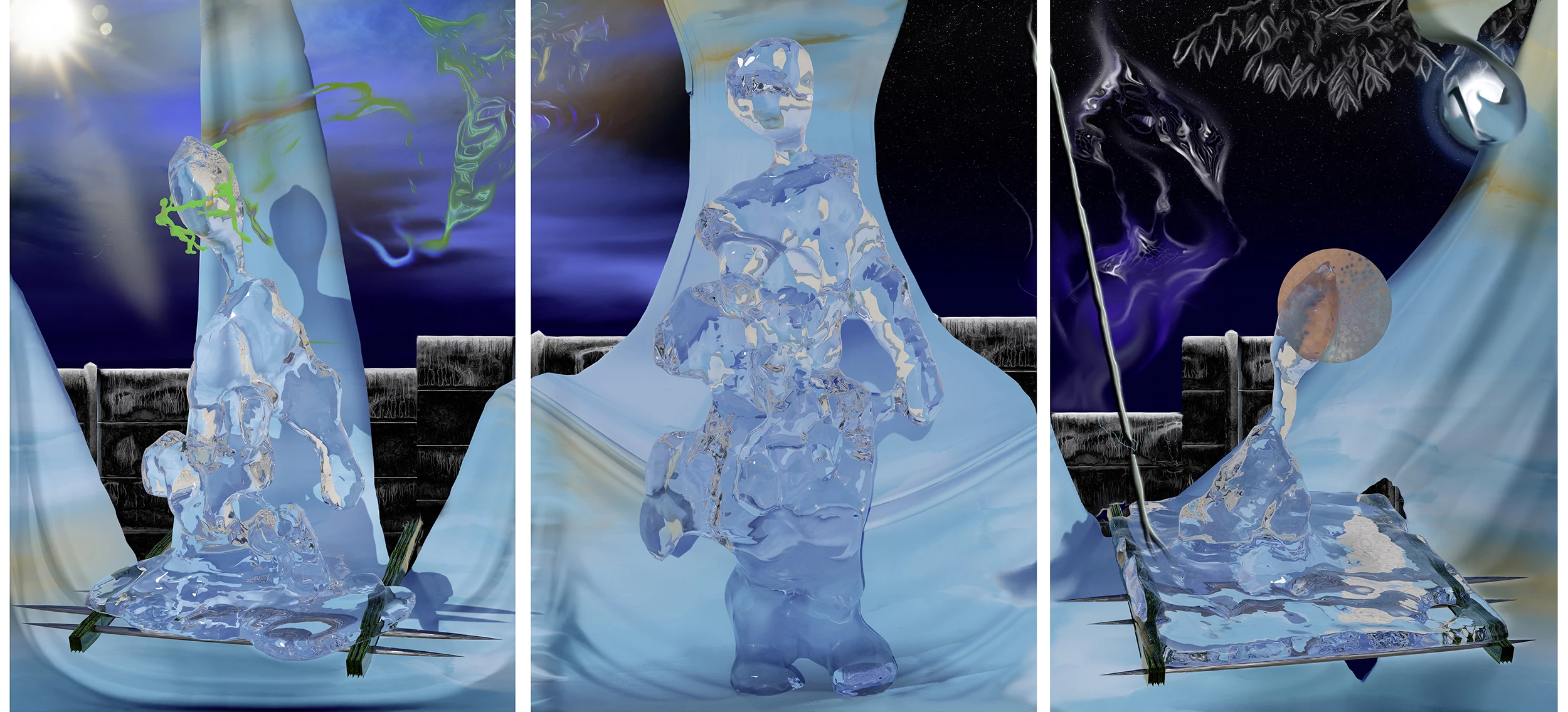
- Date
- 23 OCTOBER 2023
- Author
- MIRA WANDERLUST
- Image by
- Categories
- Monday Spotlight
Vanessa Opoku: Blending History, Technology and Marginalized Narratives within Mixed Realities
We are glad to introduce you to Vanessa Amoah Opoku (she/her), an interdisciplinary artist from Berlin who focuses on history, technology, and marginalized narratives within mixed realities. In artistic practice, Vanessa reflects on how alliances between art, science, and technology can change perceptions of our world, reality, and all living things. Her preferred media include 3D graphics, animation, sculpture, photogrammetry, sound, and artificial intelligence.
Vanessa Opoku is part of the artist collective PARA, which works in the field of interdisciplinary and site-specific installations and performing arts. Their works address topics such as chronopolitics, future heritage, and speculative feelings. Since 2021, she has been the art curator of the Balance Club Culture Festival, which explores the political significance of club culture in society, its role in different communities, and its contribution to technological and cultural progress. She studied Book Art and Graphic Design, Art and Digital Media and Photography at the Academy of Fine Arts Vienna and Bezalel Academy of Arts and Design Jerusalem, graduating with a Diploma in Fine Arts with Prof. Tina Bara at Academy of Fine Arts Leipzig in September 2021.
She holds a scholarship from the Rosa-Luxemburg-Foundation and won "gute aussichten – junge deutsche fotografie // new german photography 2021/2022." She has recently exhibited her works at Deichtorhallen Hamburg, die Angewandte Wien, Grassi Museum Leipzig, Künstlerhaus Dortmund, Halle 14 Leipzig, (im)Mutable Studio Los Angeles, with a solo show at Synnika Frankfurt, Times Museum's Huangbian Station Contemporary Art Research Center (HBS) in Guangzhou, China and at EIGEN+ART Lab, Berlin.
We reached Vanessa Opoku for an exclusive interview regarding her creative process and the collaboration with CALDOworldwide that is featuring an array of wonderful works: here is the link to see the collaboration.
CALDOworldwide is an online gallery for contemporary art with a focus on Digital Art and Game Art, along with a publishing house that presents digital exhibitions by established and emerging international artists, accompanied by physical editions and publications available for purchase in their online store. Their philosophy is to experiment and explore new, progressive ways of presenting art in the digital space.
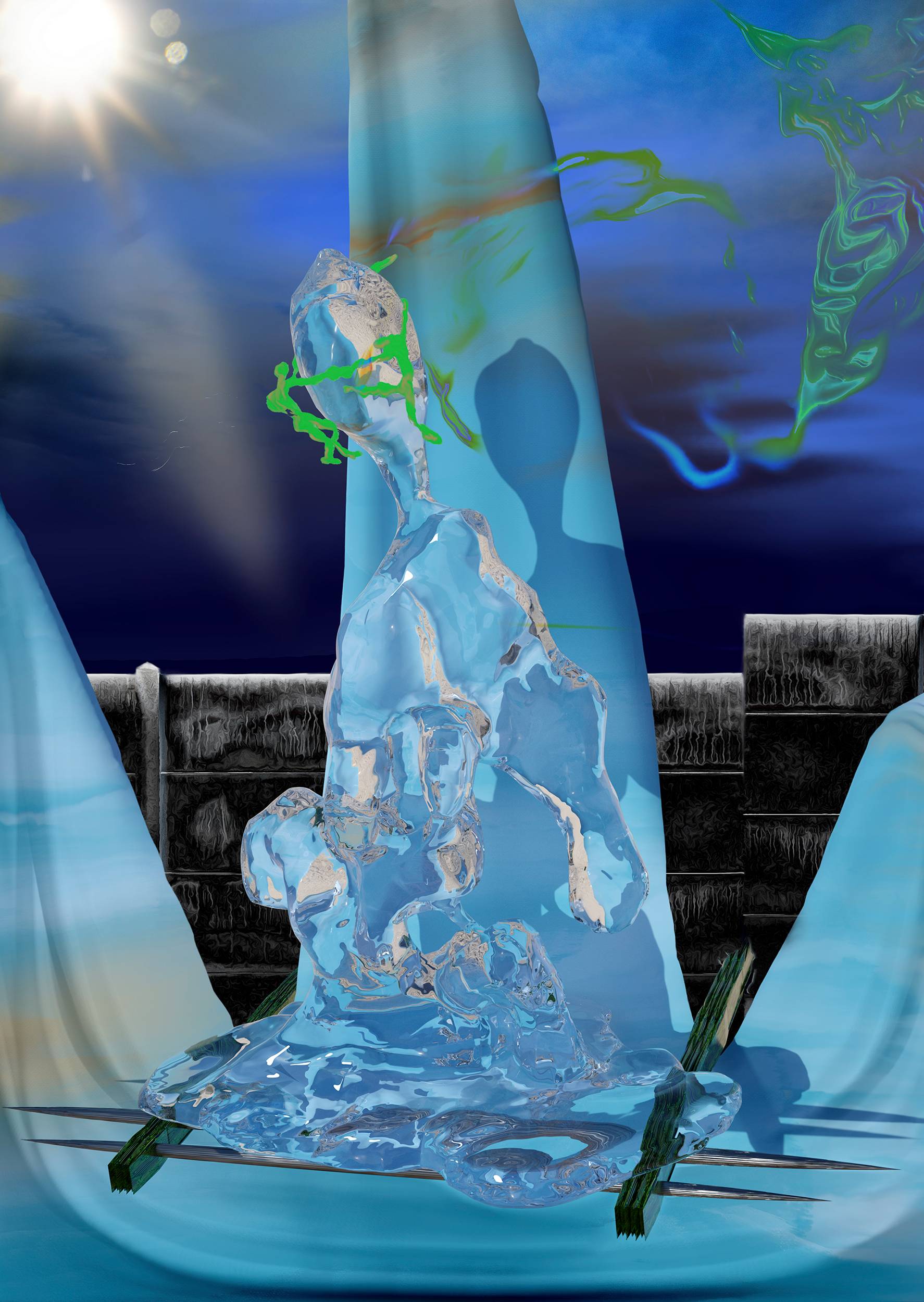
Can you tell us about your journey into the world of art? What initially sparked your interest in this field?
I studied Book Art and Graphic Design at the Academy of Fine Arts in Leipzig, Germany, and after 3 years I figured, I really like to dwell on ideas and play them in my head over and over again for a long period of time until I can construct systems, that help me approach the subjects that I am interested in, and help me find the tools according to the topics. I really wanted to work thematically on my own ideas and not be limited to certain mediums, so I switched to Fine Art, also with the help of the teachings I experienced from studying at the Academy in Vienna and Bezalel in Jerusalem. I finished with a diploma in 2021, but it was quite hard for me to find my place within the institution, because the virtual space as a space of creation is not yet established at many art academies, concerning the theory, in the sense of teaching, but also practice in the sense of access to facilities.
How did your childhood influence your journey as a multidisciplinary artist?
I grew up in a small town in Germany, as one of the only few black children around. I felt overall safe, but I was still constantly bothered. My parents tried to shield me from it as much as they could, while my father, being Ghanian, faced even more challenges. That led to a huge pressure I put on myself, trying to counteract my experiences of being belittled or not taken seriously with perfectionism and trying to be the best in things I was good at. The only space that gave me relief from this were, weirdly enough, computer games. My cousin is a computer scientist and helped me to get my first Windows 98, and I was the only one who knew how to use it in my house. So it really was my exclusive world, where no one was interfering. I loved the fact that I could just escape into other worlds and had agency over the spaces and landscapes, especially in open world and life simulation games. I loved driving through Los Santos for hours and listening to music when I was 12. Or building for hours in Theme Park World. I still get this feeling of comfort and wonder just looking at old screenshots of these games.
So to me it was just a logical step to work with virtual spaces by the time I was able to build these spaces myself.
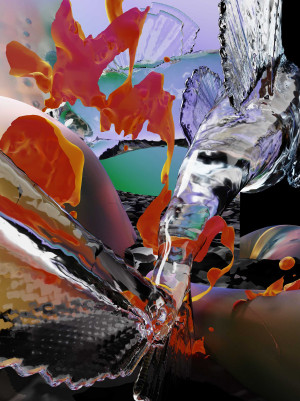
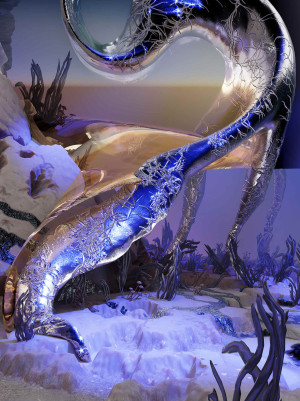
How would you describe your research process and the overall vision behind your art? How is history related to the future and technology?
The notion from which I start every work is mostly, my desire to build worlds of comfort and resistance, worlds that give me agency and let me engrave stories, oral history also from my family, cultures, manifestations and hope, into them. I see them as a kind of personal archive. It helps with the anxiety of things getting lost, stories eradicated or the connections to our ancestors being severed. Since our future is informed by our past, in the same sense that AI trained on data sets that are already outdated the moment they become data (thank you Guilherme Bretas for this brilliant thought), I feel a huge responsibility for creating defiant pasts to enable the same futures. I believe we all have that responsibility, because the future does not just appear, it is created by us.
Can you elaborate on the inspiration behind the project ‘’Parables of deep sea’’ that we can see listed on CALDOworldwide? What are the themes you wanted to convey?
Parables of Deep Sea was inspired by the Parable series by Octavia E. Butler. I take a lot of inspiration from feminist science fiction, especially that of Octavia E. Butler or Marge Piercy. In feminist science fiction of the 70s-90s, we find a lot of challenges that we are still facing today. Or as Marge Piercy writes in her revised foreword from the novel Woman on the Edge of Time, challenges we are facing again today, that we thought we had long overcome.
Though, Butler engaged more into non-utopian thinking, the two colorful works from my series Parables of Deep Sea explore one of the possible outcomes of her never finished third novel Parable of Trickster, in which, at the beginning of the novel, the protagonists find themselves on an underwhelming, extraterrestrial planet, where even the vegetation is gray. As Gerry Canavan writes in their essay „Eden, Just Not Ours Yet: On Parable of the Trickster and Utopia“, in writing from a dystopian notion, Butler engaged in a critique, that allows „glimmers of other sorts of possible worlds that are hidden in the wreckage and pain of this one.“.*
How do you approach the process of researching for a new art project? Can you walk us through your creative process from initial concept to final result? How do you choose your medium?
I would say all my works are based on my heritage, my experience of living in diaspora and how family histories, stories and concepts are transformed by diasporic cultures. My aim is to document and archive this. And it comes from an urgency to create, because I don‘t want these to be forgotten. I have a conceptual system, which I developed in the past few years. So depending on what I want to talk about, I chose the medium accordingly. I always work in three spaces. The physical, the intermediate (between the physical and virtual) and the virtual. Though I really want to stress the ephemerality of all these spaces and their blurry borders, if any. If I want to play with, document or archive physical objects or places, I 3D scan them. I like to use point cloud scans in cases, where I feel like appropriating the objects through the gesture of collecting would reproduce a form of violence (in the case of collecting material from colonial contexts for example). Honestly that is important to me personally, not necessarily important for everyone to understand from looking at my works. But I want to reflect on the practice and the process behind how I use things in my environment to produce my works, because I do care about them and the context that they are shown. If I decide to solely work in virtual space, then I might want to talk more about spaces and temporality, removing most physical connections and therefore being able to work without many limitations. When I decide to work with the physical, then it mostly emphasizes another layer of the virtual works, manifestations or engravings for example.
Working in this system I can make use of different layers that reveal different qualities and enable me to form an endless amount of narratives.
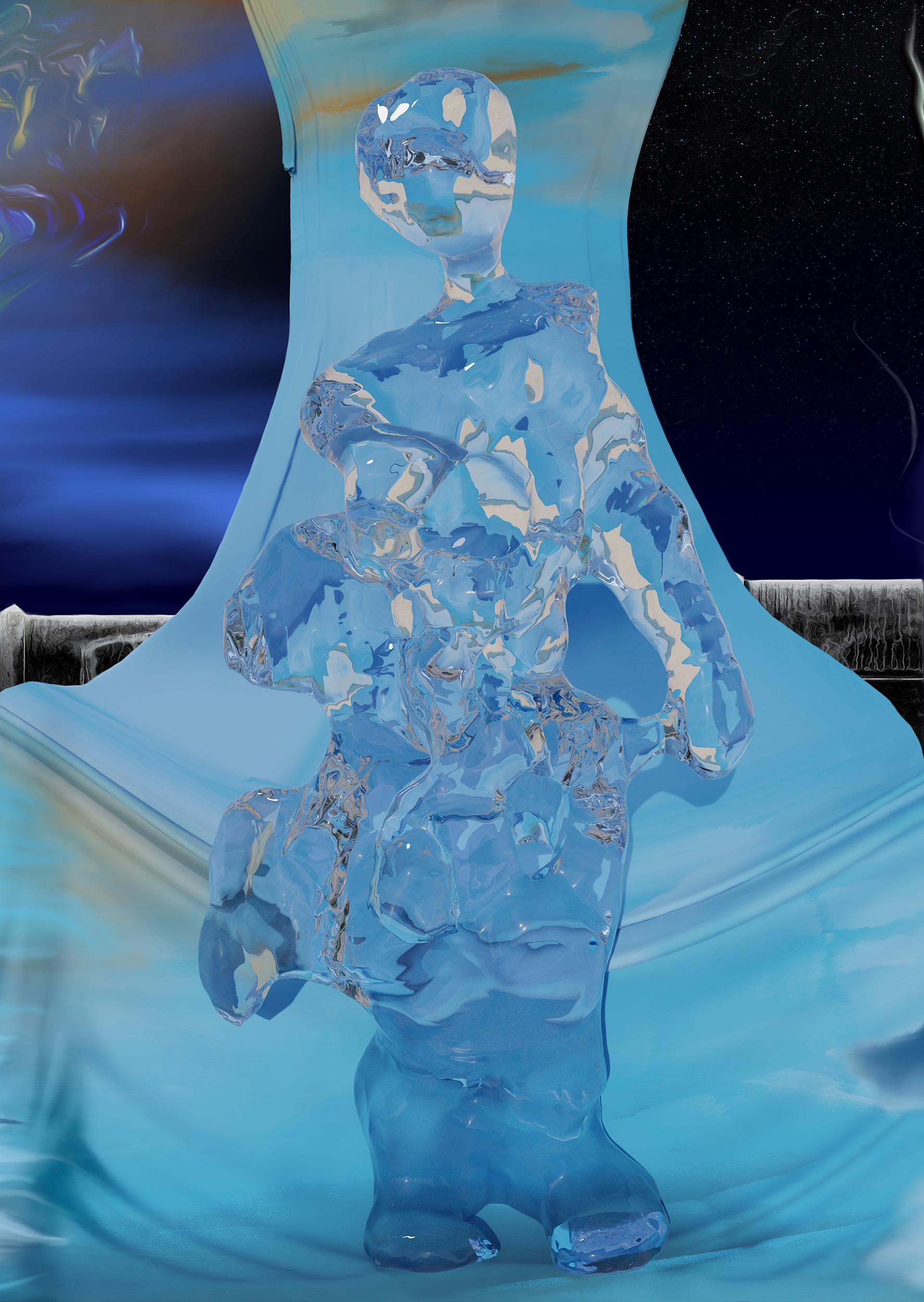
Identity exploration is becoming increasingly important in art. How do you incorporate this value into your work?
As I said before, every core of my artistic practice is based on my heritage and my experience as a black, afro-european woman. The endless resilience and power, endless resistance and transformation of home cultures and diasporic cultures under colonial or postcolonial systems bare endless inspiration. Working from this perspective feels like a duty to me, a gift from the past and future, from ancestors and fellow humans. In writing my own stories, I have agency over my own experiences.
What role does collaboration play in your work? Have you collaborated with other artists, and if so, how has that influenced your creative output?
I work in collective contexts, but more in the sense of facilitating. By curating or co-curating exhibitions for example, with Balance Club Culture Festival, PARA and Dreaming Beyond AI. By networking and building sustainable relationships. I find that essential. But also by collaborating with other artists or institutions on artworks, for example probably the longest with Lion Sauterleute, and recently the University of Applied Arts Vienna/Technical Museum Vienna and Jokkoo Collective for Sónar Festival. I find it extremely satisfying to come together, to work on the same themes and subjects but finding different forms of expressions and combining them into one. I did this recently with Philisha Kay, working on our series REST IN PEACE Simulation, which took by itself form within a collaborative project: ESCAPING INVOLUTION is a transnational collaboration project of Times Museum's Huangbian Station Contemporary Art Research Center (HBS) in Guangzhou and Synnika in Frankfurt/Main unfolding through various interventions and openings in the two cities.
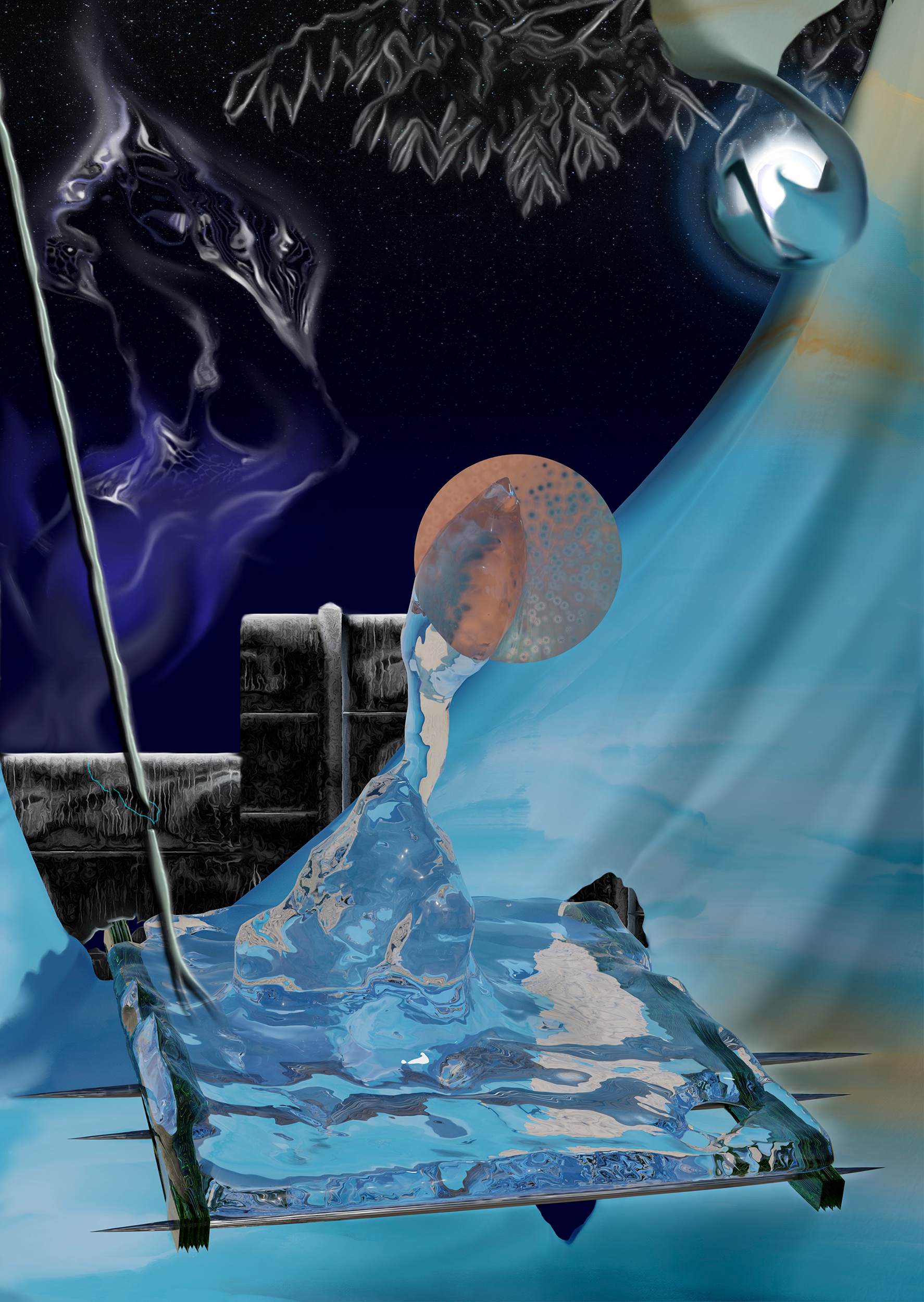
What are some of the biggest challenges you've faced as an artist, and how have you overcome them?
I think two big problems are how we talk about art as a profession and the working conditions we are accepting. There are so many forms of working in the arts. There is not just one way and how to do it „right“. I think this puts so much pressure on people who build their career. It's very important to learn from past mistakes and understand where your own boundaries are. My experience is that there is this general understanding, that in order to live from your art, you are expected to constantly exhaust yourself and still reflect on how privileged you are for working as an artist, even though you spent the past 10 years working towards this goal. What I have learned in the past two years is that managing your own resources is key, also to keep existential fears at bay. In this way, I can exhaust my boundaries for projects that would otherwise not be able to be realized be it for a lack of funding or other resources. But this also means that I simply cannot afford other projects, money-wise, energy-wise or time-wise. Foreseeing that early on and planning accordingly or finding solutions is something I am constantly learning to get better at.
What advice would you give to aspiring digital creatives who are just starting their careers?
Do not feel like you have to accept whatever comes your way. You will burn out by doing this, if you do not have any back ups in terms of resources. A typical trap is doing something that does not pay a living wage and does not bring you joy. The other thing is, I believe that working in these fields as artists often requires you to take paths that are not yet clearly marked out. This might feel unsettling, if you do something that does not fit into classical disciplines of the arts. But it is very well worth it. Find your own networks, find ways to express what you want and how you want it, not what you think others might want to see or are expecting from you.
Looking ahead, what are your future plans? Are there any exciting projects or collaborations on the horizon?
I just finished two big projects this summer. My solo exhibition „Sunrise to Sunrise (Tricksters)“ at EIGEN + ART Lab in Berlin, which is still running until the 21st of October. And the exhibition I curated together with Va-Bene Elikem Fiatsi, „'ɔsa nti' Because of War- Healing and Resilience Back Home“ at Synnika Frankfurt, which is running until 21st of December. I will have an upcoming collaboration with CALDOworldwide early next year, and will also be finishing my Meisterschüler studies at the Academy of Fine Arts in Leipzig.
A letter to your future self. What would you write?
I would remind them not to forget about how I started, so I can share my experience with others and help normalize the decision and reality to work as an artist.